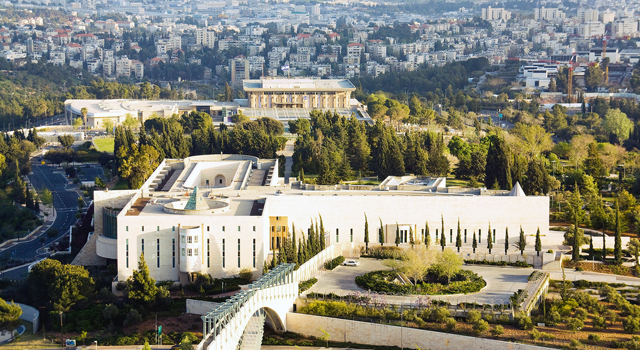Community rallies to save Stamford Jewish memorial
By Cindy Mindell
STAMFORD – It was 115 years ago that the Jewish namesake of a major Stamford thoroughfare was born in this city. Last week, Tresser Boulevard was rededicated when its memorial plaque was moved to a new location, a project spearheaded by the local chapter of the Jewish War Veterans (JWV), Fred Robbins Post No. 142.
Samuel N. Tresser was born in 1897, the son of Bella Sandhaus and Morris Tresser. In May 1915, at age 18, he enlisted in the Old Seventh Company, Connecticut Artillery Company, later Federalized as Battery D, 56th Coast Artillery Corps. Two years later, the United Stated entered World War I. Pvt. Tresser was killed in action south of Fismes, France in the Battle of Saint-Mihiel on Aug. 24, 1918, the first Jewish casualty from Stamford. He is buried in the Oise-Aisne American Cemetery and Memorial, near the battlefield.
Tresser was survived by his parents and older brother, Michael, a longtime Republican member of the Stamford Board of Representatives. In 1972, the board discussed whether to rename Willow Street, which was to be expanded as part of an urban renewal project, in memory of the fallen Stamford native.
At the time, Julius Wilensky was mayor of the city and a member of the local JWV post, says Kurt Zembler, a fellow member of the JWV and Board of Representatives at the time. “Julius would kid around and say, ‘If you guys want that Jewish street, you’d better support some of my bills,’” Zembler recalls. The City passed the ordinance in October 1972.
When Tresser Boulevard was dedicated in January 1974, a commemorative bronze plaque was placed in the center of the road, west of Atlantic Street. According to Irwin Miller, historian of the Jewish Historical Society of Fairfield County, it was relocated farther west, near the front of what was then the Stamford Advocate building, across Tresser Boulevard at Washington Boulevard. By the time the building was marked for demolition earlier this year, the plaque had been battered by years of exposure to the elements and not infrequent encounters with careless drivers, Zembler says.
“People had to jump the curb and drive another 20 feet to hit the boulder – and they did,” says JWV member Alan Sosnowitz. At a veterans’ event several months ago, Stamford mayor Michael Pavia approached Sosnowitz and other members of the JWV to ask whether they would help refurbish the plaque. “I said, ‘I’ll go save it,’ says Sosnowitz, a retired car designer. “In the army, when we took something, we would say that we’d ‘liberated’ it. With the mayor’s blessing, I went in broad daylight with chisels and a portable drill, and I ‘liberated’ the plaque.”
Sosnowitz had the plate professionally sandblasted, then used body-working materials to rebuild the raised letters. He painted the tan background a bright blue, in tribute to the Israeli flag.
“I was a sergeant in the army and I was only a sergeant on this project, not a captain or general,” says Sosnowitz. “This was a communal effort.” The mayor’s office moved a boulder from the former Advocate property to the front of Government Center, where the plaque was remounted. The mayor’s brother, Tony Pavia, principal of Trinity Catholic High School in Stamford and an authority on Stamford’s war veterans, coordinated local high-school bands to play at the rededication event. Trinity student Dominick Colarossi researched the Battle of Saint-Mihiel for the commemorative program. Sosnowitz recruited Stamford rabbi Philip Schechter to give an invocation. The Stamford Marine Corps League participated, as did JWV members, coordinated by post commander Kurt Zembler. Among them was Irwin Miller, historian of the Jewish Historical Society of Fairfield County, who told the story of Samuel Tresser and the street named tcommemorate his sacrifice.
There were some in Stamford who had wondered about the memorial’s whereabouts during its four-month-long absence. “It was a fun project to do,” says Sosnowitz, who has become friends with the mayor through their shared passion for cars. “When I delivered the plaque to the mayor’s office, his aide told me, ‘I knew the plaque had disappeared, and I thought it might have been you.’”








 Southern New England Jewish Ledger
Southern New England Jewish Ledger

















